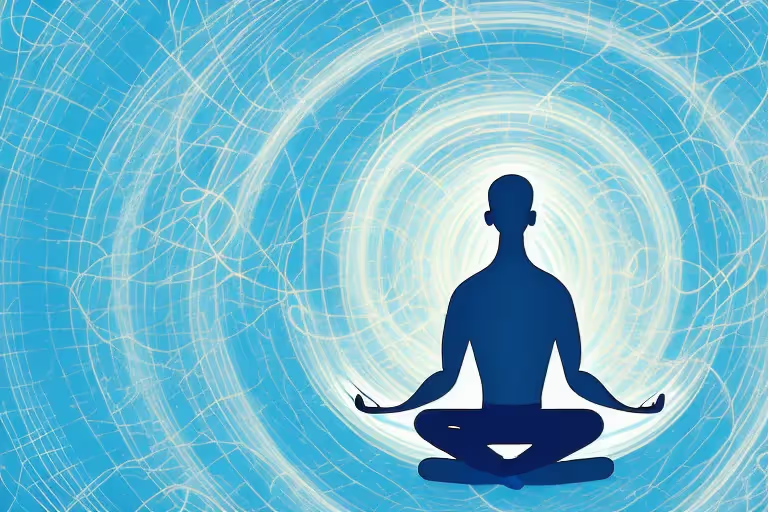Ceremonial meditation is a powerful practice that is deeply rooted in various cultures and spiritual traditions. It goes beyond the traditional sitting meditation and incorporates rituals and symbolism to create a transformative experience. Understanding ceremonial meditation and its philosophy is essential in order to fully grasp its significance and benefits.
Understanding Ceremonial Meditation
Ceremonial meditation is a profound spiritual practice that combines meditation techniques with rituals and symbolism. It is a way to connect with our inner selves and the higher consciousness through intentional actions and focused attention. The philosophy behind ceremonial meditation is centered around the belief that rituals and symbolic gestures have the power to open doorways to higher states of consciousness and spiritual realms.
The Philosophy Behind Ceremonial Meditation
Central to the philosophy of ceremonial meditation is the idea that everything in the universe is interconnected. When we engage in rituals and symbolic gestures, we are not only connecting with our own inner selves but also with the collective consciousness of all beings. This interconnection allows us to tap into a greater source of wisdom and guidance.
Furthermore, ceremonial meditation recognizes that our physical actions and external expressions can have a profound impact on our internal states. It acknowledges that the mind and body are interconnected, and by performing rituals and engaging in symbolic gestures, we are able to create a heightened state of awareness and presence that goes beyond traditional meditation techniques.
Moreover, the philosophy behind ceremonial meditation emphasizes the importance of intention. It teaches us that the energy and intention we bring to our rituals and symbolic gestures can amplify their effects. By infusing our actions with purpose and meaning, we enhance our ability to connect with the divine and access deeper levels of consciousness.
The Role of Rituals in Ceremonial Meditation
Rituals play a crucial role in ceremonial meditation, as they serve as a bridge between the physical and the spiritual realms. These rituals can take various forms, such as chanting, using sacred objects, burning incense, or performing specific movements. Each ritual has its own unique purpose and symbolism, and they are designed to help us connect with the divine and access deeper levels of consciousness.
Chanting, for example, is a common ritual in ceremonial meditation. The repetitive nature of chanting allows us to focus our minds and enter a meditative state more easily. The vibrations created by the sound of our voices can also have a soothing effect on our nervous system, promoting relaxation and inner peace.
Using sacred objects is another powerful ritual in ceremonial meditation. These objects can be anything that holds personal or spiritual significance, such as crystals, statues, or prayer beads. By incorporating these objects into our meditation practice, we create a tangible connection to the divine and invite their energy and guidance into our lives.
Burning incense is yet another ritual that adds depth to ceremonial meditation. The aroma of incense can help us shift our focus and create a sacred atmosphere. Different types of incense have different symbolic meanings, and by choosing specific scents, we can enhance the desired qualities or intentions of our meditation practice.
Lastly, performing specific movements or gestures can also be a part of ceremonial meditation. These movements can be slow and deliberate, allowing us to cultivate mindfulness and embodiment. They can also be symbolic, representing certain qualities or energies that we wish to cultivate within ourselves.
Recent data shows that rituals can have a profound impact on our psychological and emotional well-being. They can help us feel more grounded, centered, and connected to something greater than ourselves. By engaging in rituals during ceremonial meditation, we create a sacred space that allows us to let go of daily worries and enter into a state of deep relaxation and introspection.
In conclusion, ceremonial meditation is a powerful practice that combines meditation techniques with rituals and symbolism. It offers a unique way to connect with our inner selves, the collective consciousness, and the divine. By understanding the philosophy behind ceremonial meditation and embracing the role of rituals, we can deepen our meditation practice and access higher states of consciousness.
Different Types of Ceremonial Meditation
Ceremonial meditation is found in various cultures and spiritual traditions around the world. Each tradition has its own unique rituals and practices that are designed to facilitate a connection with the divine. Let's explore some of the different types of ceremonial meditation.
Buddhist Ceremonial Meditation
Buddhism has a rich history of ceremonial meditation practices. These ceremonies often involve chanting, bowing, and offering prayers to the Buddha and bodhisattvas. The purpose of these rituals is to cultivate compassion, wisdom, and devotion.
Hindu Ceremonial Meditation
In Hinduism, ceremonial meditation is deeply intertwined with religious rituals and traditions. Hindu ceremonies often involve the recitation of mantras, the offering of flowers, and the lighting of incense. These rituals are believed to invoke the blessings of the deities and create a sacred space for meditation and introspection.
Native American Ceremonial Meditation
Native American ceremonial meditation is deeply rooted in the connection with nature and the spiritual world. Sweat lodge ceremonies, vision quests, and drum circles are common practices in Native American cultures. These rituals aim to bring individuals closer to their spirituality and foster a sense of unity with the natural world.
The Process of Ceremonial Meditation
The process of ceremonial meditation involves a series of steps that prepare us for the ceremony, guide us through the meditation practice, and help us integrate our experiences afterwards.
Preparing for the Ceremony
Prior to the ceremony, it is important to set intentions and create a sacred space. This can involve cleansing the space, arranging sacred objects, and preparing oneself mentally and emotionally. These preparations are essential for creating an environment that is conducive to deep meditation and spiritual connection.
The Meditation Ceremony Itself
During the meditation ceremony, participants engage in a combination of meditation techniques, rituals, and symbolic gestures. Some ceremonies may involve sitting in silence, while others may include chanting, dancing, or specific movements. The purpose of the ceremony is to enter into a state of deep inner connection and spiritual exploration.
Post-Ceremony Reflection and Integration
After the ceremony, it is important to take time for reflection and integration. This can involve journaling, sharing experiences with others, or simply spending time in quiet contemplation. The insights and experiences gained during the ceremony can be further integrated into our daily lives, allowing us to cultivate a deeper sense of inner peace and spiritual connection.
Benefits of Ceremonial Meditation
Ceremonial meditation offers a wide range of benefits for both our psychological and spiritual well-being.
Psychological Benefits
Research has shown that ceremonial meditation can reduce stress, anxiety, and depression. The combination of meditation techniques, rituals, and symbolism helps to create a sense of calm and inner peace. Additionally, ceremonial meditation can enhance self-awareness, promote emotional healing, and improve overall mental clarity.
Spiritual Benefits
Ceremonial meditation allows us to deepen our spiritual connection and explore the mysteries of existence. By engaging in rituals and symbolic gestures, we can tap into the collective wisdom of spiritual traditions and access higher states of consciousness. This can lead to a greater sense of purpose, meaning, and spiritual growth.
Common Misconceptions About Ceremonial Meditation
Despite the numerous benefits and rich history of ceremonial meditation, there are still common misconceptions surrounding this practice.
Debunking Myths
One common myth about ceremonial meditation is that it is only reserved for spiritual experts or gurus. In reality, anyone can engage in ceremonial meditation, regardless of their level of spiritual or meditation experience. Ceremonial meditation is a personal journey that can be tailored to suit individual beliefs and needs.
Another misconception is that ceremonial meditation is only for religious purposes. While many ceremonial meditation practices are rooted in religious traditions, the practice itself can be secular and adaptable to various spiritual belief systems. Ceremonial meditation is a way to connect with the divine within ourselves and cultivate a deeper sense of inner peace and well-being.
Aura Health App can guide you on your ceremonial meditation journey, offering a variety of meditation techniques and guidance to enhance your practice. Start your transformative journey today and experience the profound benefits of ceremonial meditation.
Aura is Your All In One App for Meditation, Mindfulness Wellbeing
Find peace every day with one app for your whole well-being. There is no one-size-fits-all solution to mental well-being. Aura is the first all-in-one wellness app that learns how to best help you. Discover an endless library of expert-created tracks for your well-being, all taught by the world’s best coaches, therapists, and storytellers. With Aura's personalized recommendations, you can find peace every morning, day and night.



.webp)






.avif)

%20(1).avif)


.avif)
.avif)
.webp)


.avif)


















































































































.avif)

















.svg)









